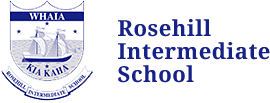Literacy
The school places a strong emphasis on children developing sound reading strategies. Emphasis is placed on developing the reading strategies and capabilities of individual students. Our approach, therefore, is to teach students in groups, alongside children of similar needs.
Math
Students are grouped based on ability level. Up to 60% of the Math Curriculum revolves around the Numeracy Project (see link below for further information). The 3 domains studied are Addition & Subtraction, Multiplication & Division and Ratios & Proportions with additional teaching in Number Knowledge strategies. Other learning areas include Measurement, Statistics & Probability, Geometry, Financial Literacy and Algebra throughout the year.
Numeracy Project
Science
Science is a way of investigating, understanding, and explaining our natural, physical world and the wider universe. It involves generating and testing ideas, gathering evidence – including by making observations, carrying out investigations and modelling, and communicating and debating with others – in order to develop scientific knowledge, understanding, and explanations. Over the 2 years at Rosehill students will study the following strands: Nature of Science, Living World, Planet Earth and Beyond, Physical world, Material World.
Social Sciences / Inquiry
The social sciences learning area is about how societies work and how people can participate as critical, active, informed, and responsible citizens. Contexts are drawn from the past, present, and future and from places within and beyond New Zealand.
The four strands are covered over a 2 year period – Identity, Culture, and Organisation, Place and Environment, Continuity and Change and the Economic World.
Using a social inquiry approach, students:
- ask questions, gather information and background ideas, and examine relevant current issues
- explore and analyse people’s values and perspectives
- consider the ways in which people make decisions and participate in social action
- reflect on and evaluate the understandings they have developed and the responses that may be required.






